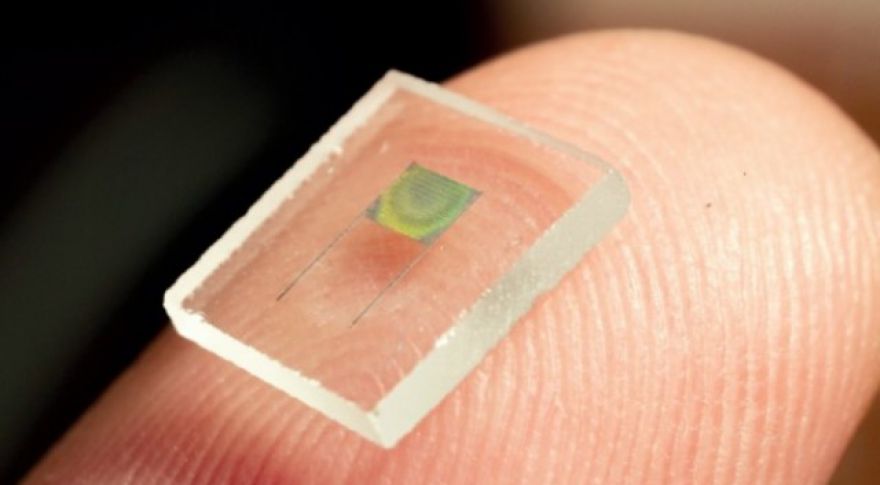
This holographic microbattery is just 10 micrometers thick
Share This article
Researchers and companies alike have been scrambling to come up with a next-generation battery, but one of the more unlikely places we’d expect to hear about it is from the study of holography. Recently, a team of engineers at the University of Illinois, Urbana-Champaign demonstrated that porous, three-dimensional electrodes can boost a lithium-ion microbattery’s power output
The result: a holographic microbattery that’s only 2mm wide and 10 micrometers thick, with an area of 4mm squared, and 12% capacity fade. The researchers said it’s compatible with existing fabrication techniques, and ideal for large-scale on-chip integration with all kinds of microelectronic devices, including medical implants, sensors, and radio transmitters. To get an idea of scale, the photo above shows the battery’s electrodes in a 2mm by 2mm square on a glass substrate. Batteries like this could power implants small enough to track certain aspects of someone’s health in real time, and without the comparatively vast bulk of existing blood glucose and cardiac monitors, just to cite one example.
Microbattery schematic illustrating lighting an LED with a 0.5 mA current which corresponds to a 600 C discharge. Credit: University of Illinois
“This 3D microbattery has exceptional performance and scalability, and we think it will be of importance for many applications,” said Paul Braun, a professor of materials science and engineering at Illinois, in a . “Micro-scale devices typically utilize power supplied off-chip because of difficulties in miniaturizing energy storage technologies.”
Braun said that a supercapacitor-like, on-chip battery of this diminutive size would be ideal for autonomous microscale actuators, distributed wireless sensors and transmitters, monitors, and portable and implantable medical devices. To fabricate the batteries, controlling the interfering optical beams for building 3D holographic lithography isn’t trivial. But “recent advances have significantly simplified the required optics, enabling creation of structures via a single incident beam and standard photoresist processing,” said professor John Rogers, who assisted Braun and his team to develop the technology.
This isn’t the first time we’ve seen such tiny microbatteries developed. Back in 2013, researchers that’s just 1mm wide, and in 2014, we saw a that could also power implants. But it’s arguably the most sophisticated and realistic design yet. On the slightly larger front, last month a team of Stanford researchers developed an that could charge up a smartphone in just 60 seconds. But in the end, it may be no surprise that holograms help us engineer better batteries — after all, we could be all this time.
Paper: PNAS, 2015. DOI: